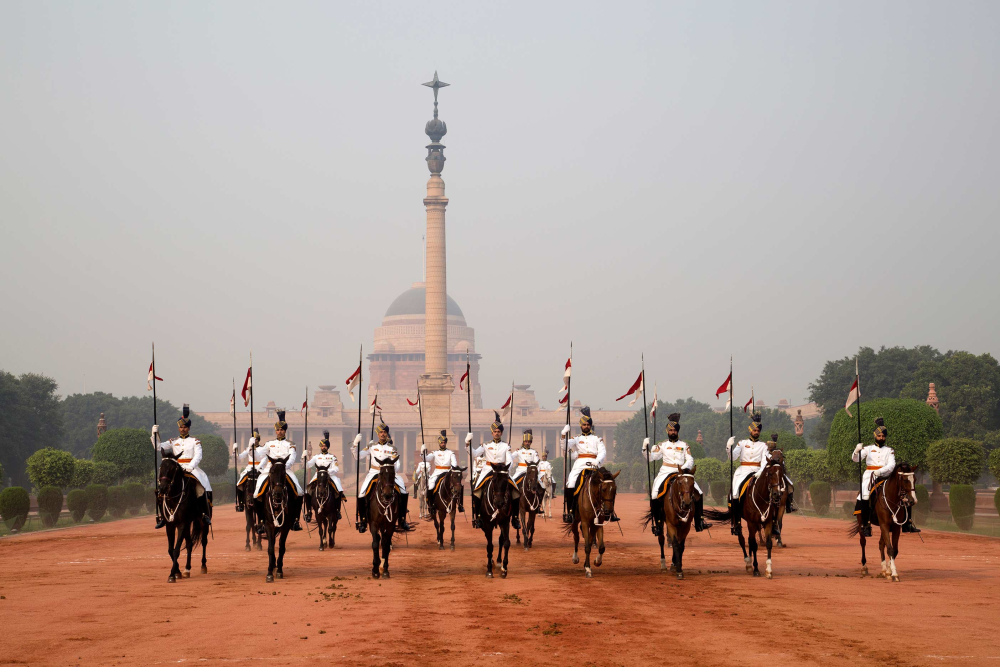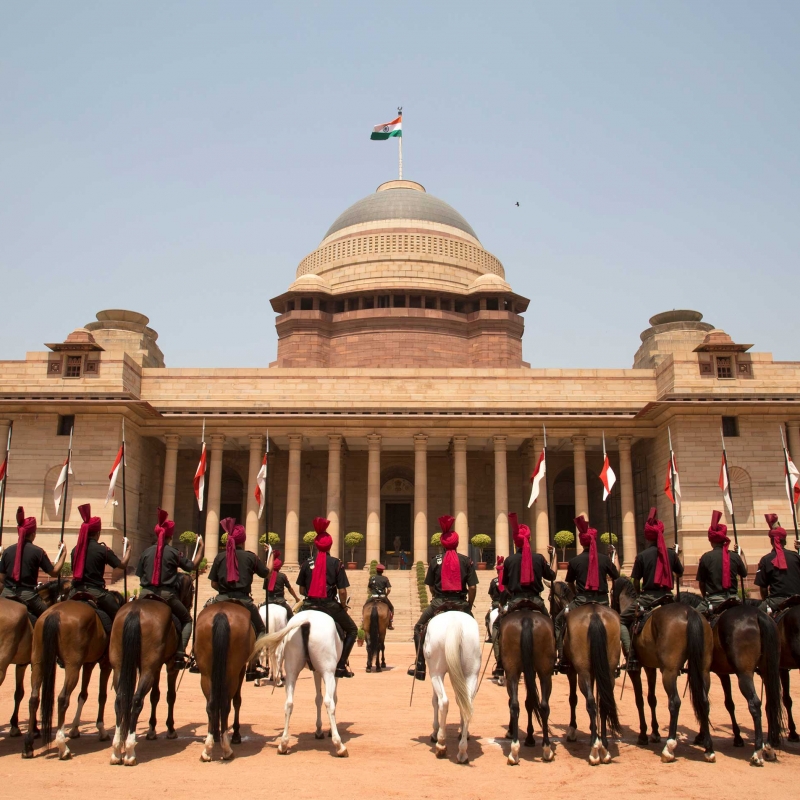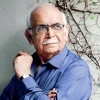Edwin Lutyens, when he began building what is now Rashtrapti Bhavan, had very little use for symbols, Indian symbols at any rate. Prof. B.N. Goswamy writes about how Indian symbolism slowly caught up with Lutyens, and is amply reflected in the architecture of the President’s House. (Photo Courtesy: Dinesh Khanna/Sahapedia.org)
This article appeared originally in The Tribune, Chandigarh and is reproduced here with permission.
With so much centring upon and emanating from Rashtrapati Bhavan these days, my thoughts turn somehow to the symbols that surround our President in his stately residence. This, because they have a life of their own, extending far beyond the ephemera that one has to contend with most of the time.
Edwin Lutyens, when he began building what is now Rashtrapti Bhavan and was then designed to be the seal of imperial authority, had very little use for symbols, Indian symbols at any rate. He looked wearily at nearly all of Indian architecture in fact. Old Hindu and Buddhist monuments made him nervous, terrified him, as he used to say, with all their complexities, their "lace patterns".
He was equally dismissive of Mughal architecture which he found to be a matter of "rectangular-cum-octagonal planes", capped by "three turnips in concrete".
There was seemingly nothing racist about Lutyens’ views for, if anything, he was even more acerbic in his comments on the villas and offices in Simla, built by and for the British. "If one was told that monkeys had built it all", he wrote," one would have said what wonderful monkeys! They should be shot in case they do it again."
But slowly, things caught up with Lutyens, it seems. There was no escaping influences, and so many things, ideas, that he went on to incorporate in the grand structure which he was engaged in building came ultimately out of the matrix of Indian thought.
Also Explore | The Rashtrapati Bhavan Project
Getting used to the idea of employing Indian stone for his building was not difficult for him, for the material—the pink sandstone of Agra, the buff of Dholpur—had a logic of its own. "The colour of a building", he conceded readily, "has both a chromatic and a sculptural sense. You cannot go wrong in building colours if you use local materials..... Climate is the architect’s colour."
It was in the matter of design that he had major problems adjusting to the Indian heritage. The great dome that tops Rashtrapti Bhavan he was inclined to model upon European domes but, as it turned out, it has even more of an affinity with the noble stupa at Sanchi, symbol of the Buddha and, through him, of equanimity, among other things.
What reinforces thoughts about the drum of the Sanchi stupa having been in his mind is the fact of his surrounding it with a tall stone railing, with its "wicker trellis" pattern, of the kind that runs around the stupa.
One recalls happily, in this connection—as Sharada Prasad does while writing on Rashtrapati Bhavan—that Lutyens’ wife, Emily, had great respect for Indian religions, and had become a theosophist herself.

But, to get back to symbols. Lutyens brought in elephants in the sculptural programme of the building everywhere. In his private life, he had come to love the animal, but what this noble creature stands for in Indian thought could not possibly have been far from his awareness, either. The mere mention of an elephant sends sacred images coursing through the Indian mind—the dream of queen Maya, the great six-tusked elephant that the Buddha was in a former birth, Indra’s Airavata, the Gajendra delivered by Vishnu’s discus—and one thinks of the animal’s wisdom, his sagacity, the ability to combine bodily strength with sensitivity of feeling. One cannot imagine that the animal figured only as a decorative motif in the architect’s scheme of things.
Again, the sun recurs as an image in Rashtrapati Bhavan, giver of light, prime sustainer of things. But so does the lotus, classical Indian symbol, signifying detachment, purity.
When the imposing "Jaipur column" was built by Lutyens in the front court, he placed at its very top, supporting the massive pointed star, a great lotus, elegant petals still in the process of opening to the light of the sun.
Also See | Design Vocabulary of the Rashtrapati Bhavan
The sight is moving, and when one sees the drawings for it made by the architect, one cannot escape the feeling that the lotus was, for him, more than a mere pretty flower.
I am sure the President looks at these things sometimes, and meditates upon their meaning. Especially upon the meaning of the lotus, in these troubled and partisan times. Or upon the great bull from Rampurwa, taken from an Ashokan pillar, which now stands at the very entrance to the main hall.
It is a noble sculpture, constant reminder of the fact that the best of men was compared to a vrishabha in our thought: patient and gentle, dharma-like in his ability to sustain.
Lutyens and Bureaucracy
Accounts of Lutyens’ life and career filled with the troubles he had with the bureaucracy all the time that he was engaged in building the great monuments in Delhi.
The highest of authorities, the Viceroys included, he could manage, but babudom got him down, with its "rules" and "procedures" and the sacred cow called "precedent". "If Government had built birds", he wrote once in a letter, "They would have mud beaks and corrugated iron feathers with a noisy machine that smelt of oil."
He would undoubtedly have been interested in knowing that birds with mud beaks continue to be built, and the noisy machines of sarkar still smell of oil.
This article has been republished as part of an ongoing series Art N Soul from The Tribune.












